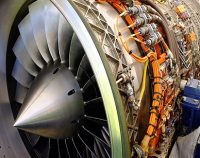Thermodynamics: 8 PDH
$48.00
This course provides a detailed overview of Thermodynamics Principles and Practices including thermodynamic principles in practical industrial, commercial and residential applications. The student will comprehend, analyze and solve various types of practical thermodynamic problems through several case studies. Laws, equations, graphs, charts, tables and diagrams, pertaining to various thermodynamics concepts, are covered and utilized in the analysis and solution of the case study problems.
SPECIFIC KNOWLEDGE OR SKILL OBTAINED
This course teaches the following specific knowledge and skills:
- Energy concepts and extension/application of the law of conservation of energy
- Conversion of thermal energy to electricity through steam turbines and electric generators
- Understanding and application of Steam Tables
- Fundamental and essential concepts such as entropy, enthalpy, heat of fusion, heat of sublimation, latent and sensible heat
- Thermodynamic processes
- Heat engine cycles
- Pyschrometric analysis based on psychrometric chart
- Refrigeration cycle related numerical analysis utilizing Pressure –Enthalpy Charts
CERTIFICATE OF COMPLETION
You will be able to immediately print a certificate of completion after passing a 30 question multiple-choice quiz. The quiz can be retaken unlimited times until a passing grade of 70% or better is earned. This course satisfies 8 professional development hours (PDH) of continuing education.
Related Courses
Improving Energy Efficiency in Historic Buildings: 2 PDH
$12.00 Add to cartIn this course the student will learn the general concept of the most efficient methods to enhance energy efficiency of historic buildings, while limiting the damage done during the rehabilitation process.Instructor: Raymond Bosek, PEIn this course the student will learn the general concept of the most efficient methods to enhance energy efficiency of historic buildings, while limiting the damage done during the rehabilitation process.SPECIFIC KNOWLEDGE OR SKILL OBTAINED
This course teaches the following specific knowledge and skills:
- Inherent energy efficient features of historic buildings
- Concept of conducting an energy audit
- Actions to improve energy efficiency
- Dealing with moisture
- Applicable alternative energy sources
CERTIFICATE OF COMPLETION
You will be able to immediately print a certificate of completion after passing a 10 question multiple-choice quiz. The quiz can be retaken unlimited times until a passing grade of 70% or better is earned. This course satisfies two (2) professional development hours (PDH) of continuing education.
Preview CourseClick “Preview Course” to View Prior to PurchaseClick “Add to Cart” to Purchase and Access QuizHeat Exchangers Fundamentals: 4 PDH
$24.00 Add to cartHeat Exchangers are a vital part to many industrial and consumer systems. They can be found anywhere from power plants and breweries to cars and HVAC systems. Heat Exchangers are vital for transferring heat from or between fluids. Knowledge of the fundamentals behind the use and design is vital to anyone involved with mechanical systems. This course reviews the practical applications of thermodynamics, heat transfer, and fluid flow principles covered in other PDH courses.Instructor: Seth Grablow, PEHeat Exchangers are a vital part to many industrial and consumer systems. They can be found anywhere from power plants and breweries to cars and HVAC systems. Heat Exchangers are vital for transferring heat from or between fluids. Knowledge of the fundamentals behind the use and design is vital to anyone involved with mechanical systems. This course reviews the practical applications of thermodynamics, heat transfer, and fluid flow principles covered in other PDH courses.
SPECIFIC KNOWLEDGE OR SKILL OBTAINED
This course teaches the following specific knowledge and skills:
- Methods of Constructing Heat Exchangers
- Types of Heat Exchangers
- Review Rate of Heat Transfer equations
- Applications of Heat Exchangers
CERTIFICATE OF COMPLETION
You will be able to immediately print a certificate of completion after passing a 15 question multiple-choice quiz. The quiz can be retaken unlimited times until a passing grade of 70% or better is earned. This course satisfies 4 professional development hours (PDH) of continuing education.
Preview CourseClick “Preview Course” to View Prior to PurchaseClick “Add to Cart” to Purchase and Access Quiz




